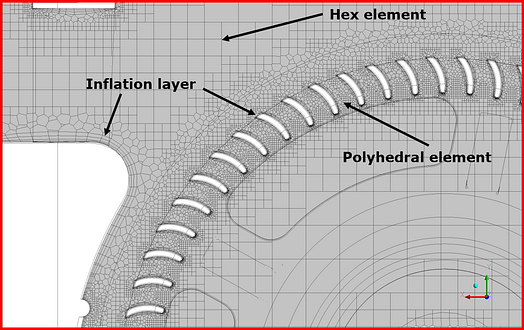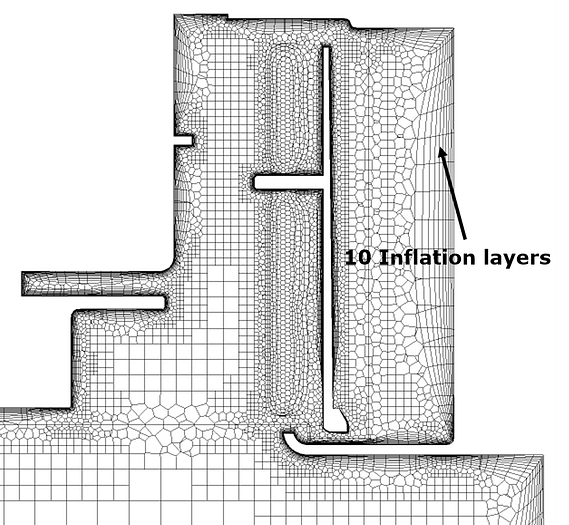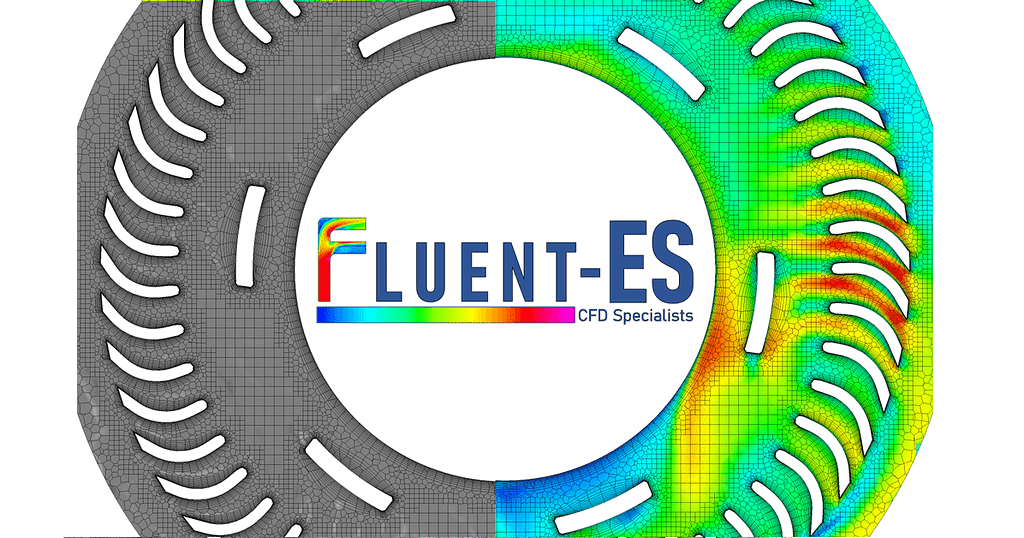In computational fluid dynamics (CFD) simulations, the accuracy of the solution is highly dependent on the quality of the mesh used to discretize the computational domain.
Selection of type of Mesh element
Three common types of elements used in meshing are hexahedral, tetrahedral elements and polyhedral elements.
Hexahedral elements, also known as hex elements, are six-sided elements that are typically used to represent solid objects in a CFD simulation. These elements need expert hands to generate, and they provide a high degree of accuracy when compared to other types of elements. They are also computationally efficient, making them a popular choice for large-scale simulations. However, hex elements are not well-suited for representing complex geometries, such as those with sharp corners or irregular shapes.
Polyhedral elements, on the other hand, are more versatile than hex elements and can be used to represent a wide variety of shapes. They are particularly useful for representing complex geometries, as they can be easily adapted to the shape of the object being simulated. Polyhedral elements also provide a higher degree of accuracy than hex elements when used to represent complex geometries. However, they are more computationally expensive than hex elements and can be more difficult to generate.

The combination of hex elements and polyhedral elements can be an effective approach to meshing a computational domain for CFD simulations. Hex elements can be used to represent solid objects with simple geometries, while polyhedral elements can be used to represent complex geometries. This approach allows for a balance between computational efficiency and accuracy. Additionally, by using a combination of both element types, it is possible to create a mesh that is more adaptable to changes in the computational domain.
Tetrahedral elements are relatively easy to generate and can be used with a wide range of CFD solvers. While hex and polyhedral element have limitations for CFD solvers. Disadvantages of using tetrahedral elements in CFD include their sensitivity to element quality and their tendency to produce distorted elements near boundaries and in regions of high curvature.

Inflation Layer
An inflation layer in CFD simulation can be used to refine the mesh in certain regions of the flow field, such as near the walls of a geometry or in regions of high gradients. This allows for a more accurate simulation by providing a higher resolution in these important areas while using a coarser mesh in other regions where a high resolution is not needed. This can lead to a significant reduction in computational cost and time. Selection of number of layer, first layer height is depend on the dimensionless numbers such as NRe , Pr and type of flow problem we want to solve using CFD calculation.
In summary, Hex elements and polyhedral elements are both commonly used elements in CFD simulations, each with their own advantages and disadvantages. Hex elements are efficient and accurate for simple geometries, while polyhedral elements are efficient for complex geometries. Combining both element types provides a balance between computational efficiency and accuracy, and also provides a more adaptable mesh when there are changes in the computational domain.

